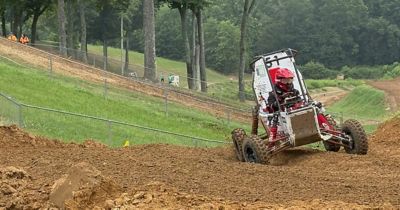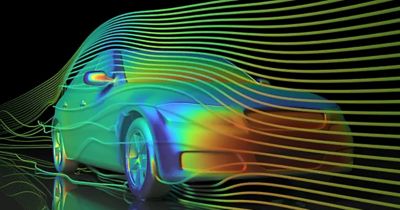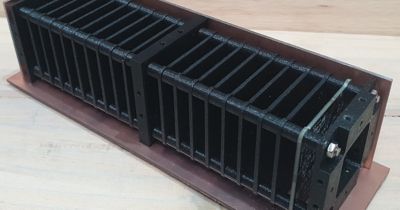-
-
Software gratuito per studenti
Ansys potenzia la nuova generazione di ingegneri
Gli studenti hanno accesso gratuito a software di simulazione di livello mondiale.
-
Connettiti subito con Ansys!
Progetta il tuo futuro
Connettiti a Ansys per scoprire come la simulazione può potenziare la tua prossima innovazione.
Paesi e regioni
Customer Center
Supporto
Partner Community
Contatta l'ufficio vendite
Per Stati Uniti e Canada
Accedi
Prove Gratuite
Prodotti & Servizi
Scopri
Chi Siamo
Back
Prodotti & Servizi
Back
Scopri
Ansys potenzia la nuova generazione di ingegneri
Gli studenti hanno accesso gratuito a software di simulazione di livello mondiale.
Back
Chi Siamo
Progetta il tuo futuro
Connettiti a Ansys per scoprire come la simulazione può potenziare la tua prossima innovazione.
Customer Center
Supporto
Partner Community
Contatta l'ufficio vendite
Per Stati Uniti e Canada
Accedi
Prove Gratuite
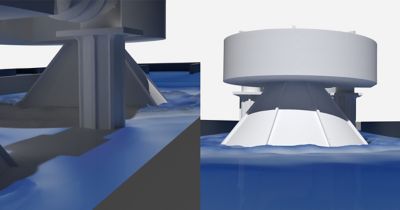
Discover how VorTech's groundbreaking water treatment platform will help move us one step closer to a water-secure world.
Showering, brushing our teeth, and filling up a glass of water are simple luxuries most of us don't give much thought to. Chances are good that the potable water we use for these activities is either surface water collected from streams, rivers, lakes, and reservoirs, or groundwater that collects below the ground in pores or spaces between rocks. In some parts of the world, however, many still struggle to find access to clean water derived from these sources.
According to the World Economic Forum, there are 4 billion people living in water-scarce areas, and one in four cities face water insecurity. By 2030, global freshwater demand will outpace supply by 40%, leaving approximately 1.6 billion people without safely managed drinking water. Compounding the problem is the global release of approximately 80% of all untreated industrial and municipal wastewater back into the environment.
Energy-efficient water and wastewater solutions specialist VorTech Water Solutions has developed a groundbreaking platform of water treatment technologies based on vortex and cyclonic flows. With a little help from the Ansys Startup Program and CADFEM UKI, an Ansys Elite Channel Partner, the company seeks to solve these and other water and wastewater challenges.
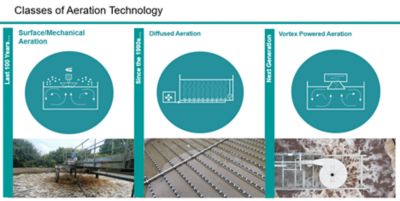
A visual comparison of the traditional aeration technologies and the new Vortex Powered Aeration (VPA) technology
Simulation Taps Into More Sustainable Treatment Options
There are many issues with the delivery of clean water, sustainability notwithstanding, as water treatment can be quite energy intensive. In fact, direct process emissions can account for more than 60% of a wastewater plant's carbon footprint, while 30% is due to energy-related indirect emissions. Additionally, wastewater treatment centers are generally a challenging environment for material science and technology applications, as they demand simultaneous consideration of many factors.
Thanks to the Ansys Startup Program and CADFEM UKI, VorTech has full access to multiphysics software coupled with high-performance computing (HPC) for comprehensive analysis of water treatment technologies that can help. CADFEM UKI provided expert product support and coordinated access to Ansys licenses and on-demand HPC resources via the CADFEM UKI portal linked to AWS. This enables VorTech to quickly adopt numerical methods for its processes and scale up simulations as required.
At the forefront of VorTech’s work is sustainability. Ansys tools help address key wastewater management challenges related to this effort, including:
- Energy efficiency: VorTech says optimization of its water treatment technologies has reduced energy consumption required for aeration by 30% to 50% overall.
- Improved maintenance requirements and accessibility: Simulation enables simple, reliable, easily maintained designs, which can result in safer, lower-cost operations and procedures.
- “Retrofitability” of aging infrastructure: Rather than phase out, tear down, or replace aging infrastructure, VorTech can breathe new life into existing infrastructure to increase capacity and meet more stringent treatment regulations.
- Noise and spray reduction: Mechanical surface aerators are known for creating fine mist and sprays that can be hazardous to operator health. This is compounded by mechanical aerator and diffuser system noise that can impact both operators and the neighborhoods surrounding a site. Unlike more traditional costly retrofits, VorTech says VPA technologies eliminate exposure to mists, sprays, and noise entirely.
- Recyclable technology: VPA technologies feature a recyclable, stainless-steel design that promotes water and wastewater industry net-zero objectives. They also accommodate refurbishment and upgrades to ensure the lifetime of an asset can be continually extended if required.
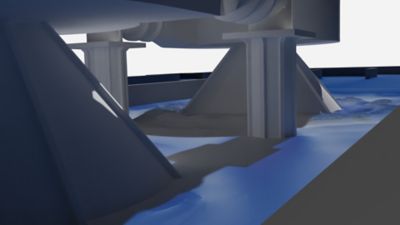
Surface flow simulated around multiple VPA units installed in oxidation ditches.
For VorTech R&D, It's Always Been Ansys
From the beginning, VorTech has taken a simulation-driven digital research and development (R&D) approach to solve wastewater treatment challenges for customers. The startup has been using Ansys Fluent fluid simulation software for computational fluid dynamics (CFD) to understand the hydraulics taking place inside its vortex power aerator (VPA) technology. This activity helps optimize and demonstrate mixing efficiency inside the reactors, which is necessary to successful water treatment.
Coupling CFD with finite element analysis (FEA) in Ansys Mechanical structural FEA analysis software also proved useful for structural design quality assurance. This practice is now foundational to VorTech’s structural design process and standard for new machine development.
"In this instance, Ansys simulation helped us design a solution that really moved the needle for our customers."
— Sean Mulligan, CEO of VorTech
“Simulation plays a huge role in quality assurance at VorTech,” says Sean Mulligan, CEO of VorTech. “As we design new variations of our technology sized to meet specific aeration demands, we can check the structural strength requirements and fatigue life performance dynamically. Our structural lead engineer has integrated the two processes together to such a degree that the design of our new units is intrinsically linked to their structural capability first. This drastically reduces the turnaround time of new unit designs.”
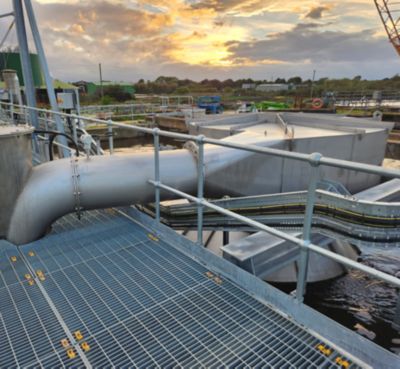
A VPA unit operating in an oxidation ditch
CFD and FEA Help Reduce Total Site Energy Consumption by 41%
Simulation was particularly impactful in the design, delivery, and commissioning of VorTech's new VPA-S6 unit supplied to a wastewater treatment plant in the U.K. In this case, advanced simulations were leveraged to understand mixing performance in the circular reactor and receive information about the structural integrity of the unit. Mixing is a key element of wastewater treatment that keeps solid particles in suspension within the fluid and ensures the distribution of both dissolved oxygen and chemicals.
These types of simulations required high-fidelity analysis of both fluid and structural dynamics to better comprehend the interaction between the fluid flow and the physical components of the unit.
"In this instance, Ansys simulation helped us design a solution that really moved the needle for our customers," says Mulligan. "During a comprehensive carbon equivalent analysis, pre- and post-upgrade, we were able to demonstrate carbon equivalent savings of 93,500 kg CO2 equivalent (CO2e) per annum through chemical use reductions alone. Ultimately this will save the customer $120,000 per year, or 39% against a baseline cost of approximately $307,500."
VorTech's efforts ultimately resulted in a 41% reduction in total site energy consumption representing a reduction of 9 kilowatt-hours (kWh) — or $1.18 dollars — per livestock processed to 5 kWh. Using Mechanical and Fluent software, VorTech was able derisk the hydraulic and structural performance of the unit while also reducing the chemical usage required for treatment.
Learn more about Fluent and Mechanical software, and see how Ansys supports sustainability.
Virtual Demonstrations Bring New Hope to Remote Regions
Ansys simulation has also been an invaluable tool in demonstrating the value of VorTech’s technological capabilities to potential customers in remote regions. In spreading the word virtually, VorTech hopes to expand its reach with technology that can deliver clean water to those who need it most.
“We have experienced increased customer confidence in our solutions through the virtual piloting of our new technology for site-specific conditions,” says Sean Mulligan, CEO of VorTech. “In certain parts of the world, potential customers may not be located close to any of our recent installations. And the technology is so new, you can understand the risk aversion that would present in any decision-making. Should the risk be taken with this new technology, or not? Virtual piloting in a simulation environment helps alleviate any perceived risks that potential customers may have, giving them confidence in our product for their site-specific conditions.”
The Advantage Blog
The Ansys Advantage blog, featuring contributions from Ansys and other technology experts, keeps you updated on how Ansys simulation is powering innovation that drives human advancement.
